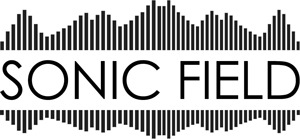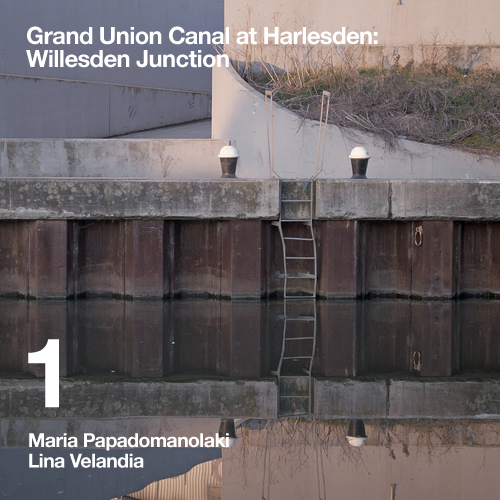Grand Union Canal at Harlesden: Willesden Junction
‘Grand Union Canal at Harlesden: Willesden Juncion’ is a sonic, visual and written essay based on the collective experience of Maria Papadomanolaki, Yiorgis Sakellariou, Lina Velandia and I at this location situated in the north of London on February 19.
During the closing dinner party of the ‘In the field’ symposium (where I was invited by CRISAP and the British Library to give a lecture) Maria Papadomanolaki, Yiorgis Sakellariou -sound artists-, Lina Velandia -photographer- and I engaged in an interesting conversation that prompted a mutual interest in finding and explore a location within the London area that could visually and sonically appeal us. The original plan was to record in an abandoned building in Harlesden close to the Willesden Junction train station but we were not allowed to get in, and since they had security personnel and vigilante dogs, we didn’t manage to sneak in either. A few hundred meters away from the building we found the Grand Union Canal and this is where the exploration actually took place.
-David Vélez
PART I
Willesden
Text and sound by Maria Papadomanolaki
Photos by Lina Velandia
Download ‘Willdesen Junction’ by MARIA PAPADOMANOLAKI
The coexistence of industry and nature seems like a common theme in many urban and rural locations in Britain. Present-day UK has its roots in industrialism, after all. The use of the term nature almost feels like a paradox in such a context. It is present nonetheless and what we encountered in Grand Union Canal was another expression of this condition. What is the sound of such a concurrence? Or, even more inconveniently, what’s one’s presence and position in such a landscape? How can one follow the lines, flows and movements of its everyday trespassers and commuters? And I say trespassers for it felt like all the birds in the canal were living on the dividing line between the recycling sites and factories. The location was dominated by some kind of informal aural division too. The acoustic properties of the space provided a varied pallet of resonances. The west-bound side was busy with machinery and industrial activity whereas around the east-bound side things were a tiny bit more subtle allowing to the delicate sounds of birds to become more audible. By recording the canal, I tried to answer some of the above questions, perhaps not with great success but with keen ears, eyes and body nonetheless. I did learn a lot from the process. I did two recordings, one on each side of the canal. For the purposes of this post, I chose to present the sounds of the east side of Grand Union Canal.
Most of the time, I like to walk around a place. That’s the best way for me to relate to it, to understand its many undertones and in the long run to inhabit it. It is interesting how walking can sometimes help the senses to become more alarmed. It is a longstanding process that is still under development; a method to tentatively relate to my surroundings; “tentatively” means to be open to happenstances; to try to be open. And that’s exactly how I experienced the canal. Until recently, I was mainly using binaural microphones which facilitated my walking habit. For “Willesden”, I applied for the first time my “binaural” mode in recording with a shotgun microphone; a rather challenging and in theory impossible idea from its conception. I attempted however to take some advantage of the microphone’s directionality. I recorded my footsteps on different surfaces as I encountered them or I tried to follow my head’s reaction when different sounds occurred. In that sense, I used a more reactive approach. I eventually synchronised with the events as they happened. I focused on my body’s response and relation to the landscape as opposed to the sounds themselves. I tried to fit with the transient scenery of the passing trains, cyclists, ducks, crows, crackles, hums and splashes by being on the move. The mobility of my approach unfortunately caused a disruption, what David later described to me as accidental live editing, which can be heard towards the end of the recording. The sounds that stood out for me were the bizarre echoes of passing trains that changed depending on my position, the textures of the different pedestrian surfaces (wood, pebbles, cement, grass) as well as the bursts of bird sounds from within a constant drone made of distant machinery and train traffic.
-Maria Papadomanolaki
Recordings and photos captured on 19/02/2013. London.








